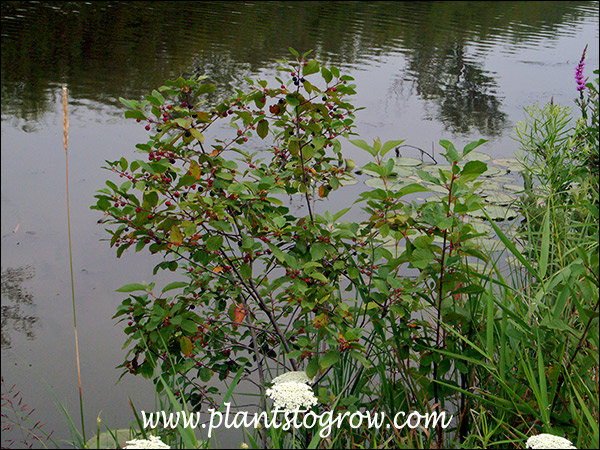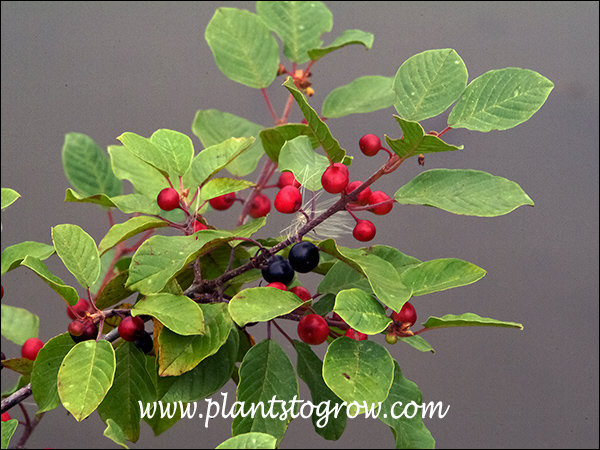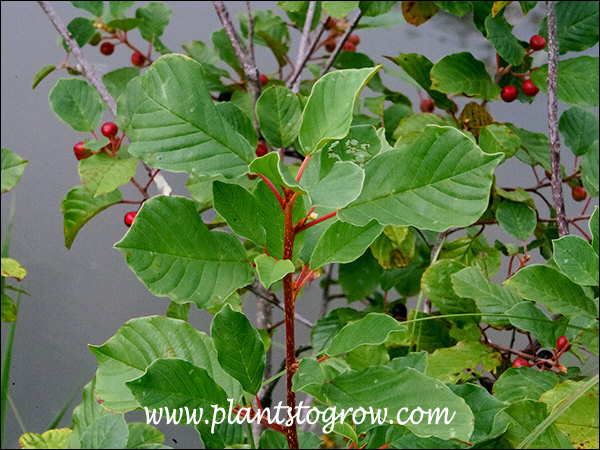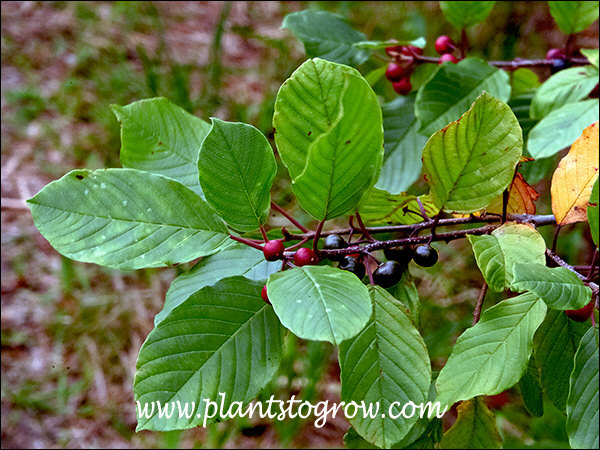| Description | Buckthorn (Rhamnus frangula) is an exotic, invasive small tree that is causing ecological havoc in many areas. |
|---|---|
| Pronunciation | (RAM-nus) |
| Plant Type | All Plants, Trees Deciduous |
| Hardiness Zone | 3-8 |
| Sunlight | full sun, tolerates shade |
| Moisture | moist but very adapatable. |
| Soil & Site | invades wet area such as wet prairies, marshes, calcareous fens, sedge meadows, etc. |
| Flowers | whitish green, 5 petals, clustered up to 10, bisexual and pollinated by insects, usually flies. . |
| Fruit | berry-like drupe, changing from red to black |
| Leaves | alternate, simple, deciduous leaves, dark green, poor yellow fall color, obovate and entire |
| Roots | fibrous |
| Dimensions | a large deciduous shrub or small tree, reaching 10-15' tall by 10-12' spread. |
| Propagation | The birds eating the fruit spread the plants. |
| Native Site | Native to Eurasia and Northern Africa. Introduced into the US prior to 1900's and became well spread after the 1900's. Was used for hedges, forestry plantings, wildlife cover, etc. |
| Misc Facts | The fruit has been reported to act as a laxative. |
| Author's Notes | In the area where I live this has become a fast growing, spreading plant pest. It invades areas and becomes the dominant plant. It leafs out very early shady out the natives, making it very difficult for them to compete. I was one of the advisors for the environmental high school group called "Students To Save The Earth". The Buckthorn was one of our targets as when cut down and pulled out seedlings in parks and nature conservancies. |
| Notes & Reference | 101-Invasive Plants of the Upper Midwest (Betty Czarapata), Weed Ecology, Purdue University, Plant UConn Database |

Cart





